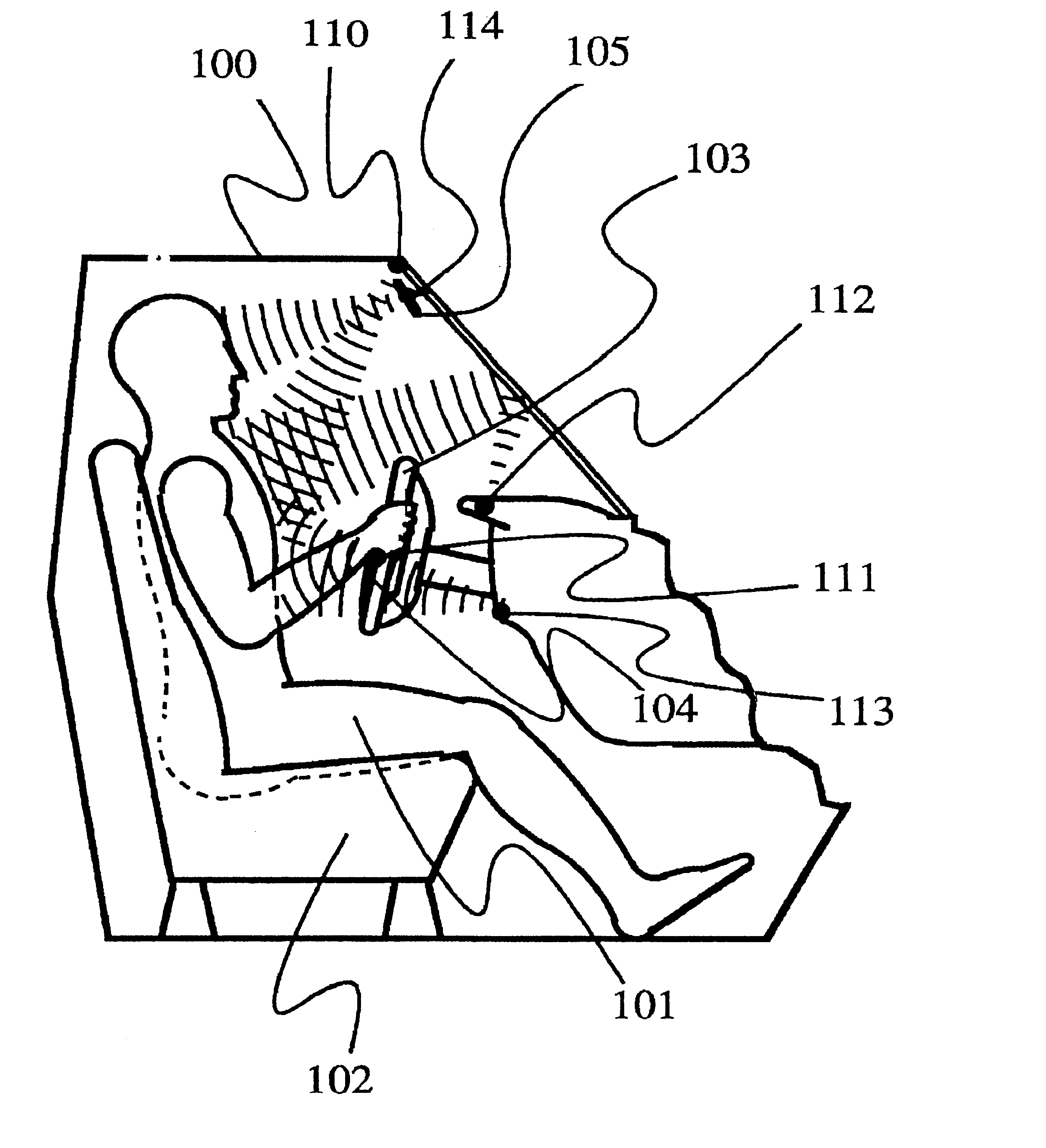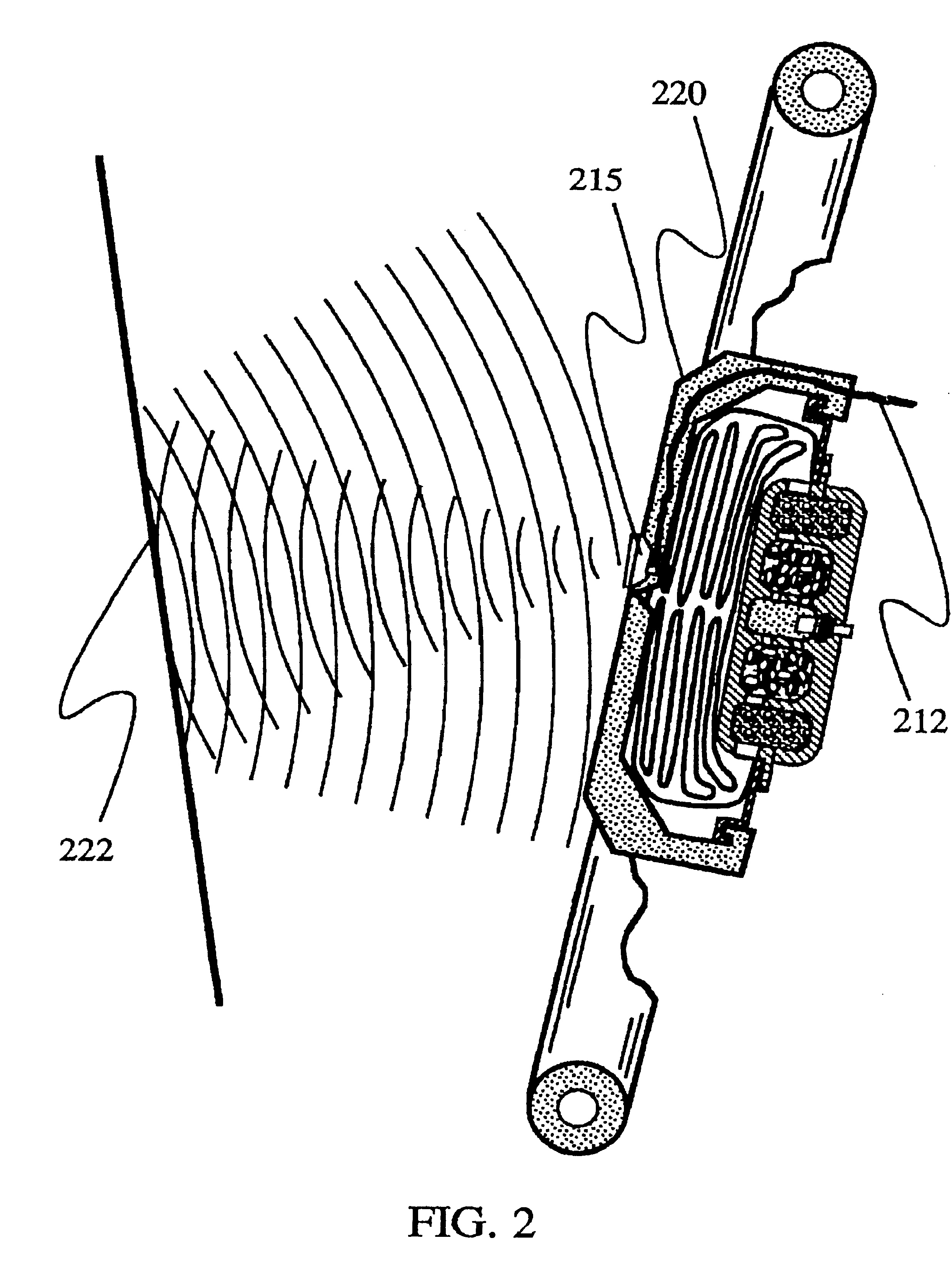Vehicle occupant position and velocity sensor
a technology of vehicle occupant position and velocity sensor, which is applied in the direction of child seats, instruments, tractors, etc., can solve the problems of/will be injured, etc., and achieve the effect of accurate discrimination
- Summary
- Abstract
- Description
- Claims
- Application Information
AI Technical Summary
Benefits of technology
Problems solved by technology
Method used
Image
Examples
Embodiment Construction
Referring now to the drawings, a section of the passenger compartment of an automobile is shown generally as 100 in FIG. 1. A driver of a vehicle 101 sits on a seat 102 behind a steering wheel 103 which contains an airbag assembly 104. Five transmitter and / or receiver assemblies 110, 111, 112, 113 and 114 are positioned at various places in the passenger compartment to determine the location of the head, chest and torso of the driver relative to the airbag. Usually, in any given implementation, only one or two of the transmitters and receivers would be used depending on their mounting locations as described below.
FIG. 1 illustrates several of the possible locations of such devices. For example, transmitter and receiver 110 emits ultrasonic acoustical waves which bounce off the chest of the driver and return. Periodically a burst of ultrasonic waves at about 50 kilohertz is emitted by the transmitter / receiver and then the echo, or reflected signal, is detected by the same or differen...
PUM
 Login to View More
Login to View More Abstract
Description
Claims
Application Information
 Login to View More
Login to View More - R&D
- Intellectual Property
- Life Sciences
- Materials
- Tech Scout
- Unparalleled Data Quality
- Higher Quality Content
- 60% Fewer Hallucinations
Browse by: Latest US Patents, China's latest patents, Technical Efficacy Thesaurus, Application Domain, Technology Topic, Popular Technical Reports.
© 2025 PatSnap. All rights reserved.Legal|Privacy policy|Modern Slavery Act Transparency Statement|Sitemap|About US| Contact US: help@patsnap.com



